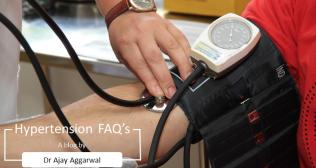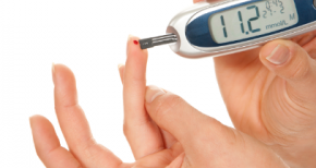
The Silent Epidemic: Understanding Vitamin D deficiency
Vitamin D is often called the "sunshine vitamin," a name that suggests it should be plentiful and easy to obtain. Yet, paradoxically, a deficiency in this essential nutrient has become a silent, widespread health issue affecting millions of people across all age groups. Because its symptoms can be subtle and easily mistaken for other common ailments, many people live with this deficiency for years without ever realizing it.
This lack of vitamin D can have a significant impact on everything from bone health and immune function to mood and energy levels. Recognizing the risks, symptoms, and the long-term diseases associated with this deficiency is crucial for safeguarding your health.
What Is Vitamin D and Why Is It So Important?
Vitamin D is a fat-soluble vitamin that is unique because our bodies can produce it when our skin is exposed to sunlight. It functions more like a hormone than a vitamin, playing a critical role in numerous bodily processes. Its most well-known function is to help the body absorb calcium and phosphorus, two minerals that are essential for building and maintaining strong bones.
However, its importance goes far beyond bone health. Vitamin D also plays a key role in:
- Supporting the Immune System: It helps modulate our immune response, making us better equipped to fight off infections like colds and the flu.
- Regulating Mood: Receptors for vitamin D are found in areas of the brain that are linked to the development of depression.
- Muscle Function: It is essential for normal muscle contraction and strength.
- Cell Growth: It plays a role in the life cycle of our cells, helping to regulate their growth.
The Subtle Signs: Vitamin D deficiency Symptoms
One of the main reasons vitamin D deficiency is so common is that the symptoms are often vague and non-specific. Many people either have no symptoms at all or attribute them to other causes like stress or lack of sleep. Being aware of these potential red flags is key.
1. Persistent Fatigue and Tiredness
Feeling tired all the time is one of the most common yet overlooked vitamin D deficiency symptoms. If you are getting enough sleep but still feel constantly exhausted, it could be a sign that your body is lacking this vital nutrient.
2. Bone and Back Pain
Because vitamin D is essential for calcium absorption, a deficiency can lead to inadequate bone mineralization. This can manifest as a persistent, deep ache in the bones, particularly in the lower back, legs, and ribs.
3. Frequent Illness or Infections
A strong immune system is your best defense against viruses and bacteria. Since vitamin D plays a crucial role in immune function, low levels can leave you more susceptible to frequent respiratory infections like colds, bronchitis, and pneumonia.
4. Depression and Low Mood
The link between low vitamin D and mood disorders, particularly seasonal affective disorder (SAD), is well-established. If you find yourself feeling consistently low, especially during months with less sunlight, it could be related to your vitamin D status.
5. Impaired Wound Healing
If cuts and scrapes seem to take an unusually long time to heal after an injury or surgery, it might be a sign of low vitamin D levels. The vitamin plays a role in the formation of new skin as part of the healing process.
6. Muscle Pain and Weakness
The vitamin D deficiency symptoms can also be felt in the muscles. Aches, weakness, and a general feeling of heaviness in the limbs can be signs of a deficiency, as the vitamin is necessary for proper muscle function.
Long-Term Consequences: Vitamin D deficiency Diseases
When a deficiency is left unaddressed for a long time, it can lead to more serious health conditions. The most well-known vitamin D deficiency diseases are related to bone health.
- Osteoporosis: This is a condition where bones become weak, brittle, and more likely to fracture. While it is often associated with a lack of calcium, a vitamin D deficiency is a major contributing factor because without it, the body cannot absorb the calcium it needs.
- Osteomalacia: This is a condition in adults where the bones become soft due to poor mineralization. It causes bone pain and muscle weakness.
- Rickets: This is the equivalent of osteomalacia in children. It is a severe vitamin D deficiency diseases that leads to soft, weak bones, resulting in skeletal deformities like bowed legs.
Beyond bone diseases, chronic deficiency is also being investigated for its potential links to an increased risk of cardiovascular disease, certain cancers, and autoimmune disorders.
How to Improve Vitamin D deficiency
The good news is that this deficiency is both preventable and treatable. Knowing how to improve vitamin D deficiency involves a three-pronged approach.
1. Sensible Sun Exposure
Our primary source of vitamin D is the sun. Our skin produces it when exposed to ultraviolet B (UVB) rays. Aiming for about 10-30 minutes of midday sun exposure on your arms and legs several times a week can be effective. However, this depends heavily on your skin tone, location, and the time of year.
2. Dietary Sources
Few foods are naturally rich in vitamin D, but you can find it in:
- Fatty fish like salmon, mackerel, and sardines.
- Egg yolks.
- Fortified foods, such as milk, yogurt, orange juice, and breakfast cereals.
3. Supplementation
For most people with a deficiency, diet and sun exposure alone are not enough to correct it. Supplementation is the most reliable way to increase your levels. It is essential to consult a doctor before starting any supplements. They will perform a blood test to confirm the deficiency and recommend the appropriate dosage for you.
Taking Charge of Your Vitamin D Health
The widespread nature of vitamin D deficiency makes it a silent but significant public health concern. Its vague symptoms mean it often goes undiagnosed, potentially leading to serious long-term health issues if left untreated.
By being aware of the symptoms, understanding your personal risk factors, and speaking with your doctor about testing, you can take control. Ensuring you have adequate levels of this crucial vitamin is a simple yet powerful step toward protecting your long-term health.
Frequently Asked Questions
1. Who is most at risk for vitamin D deficiency?
Ans. People with darker skin, older adults, those who are overweight or obese, and individuals who get very little sun exposure are at the highest risk.
2. How do I know if I have a vitamin D deficiency?
Ans. The only way to know for sure is through a simple blood test called a 25-hydroxy vitamin D test, which can be ordered by your doctor.
3. Can I get enough vitamin D from food alone?
Ans. It is very difficult to get enough vitamin D from your diet alone, as very few foods are naturally rich in it. This is why sun exposure and supplementation are so important.
4. How long does it take to correct a deficiency?
Ans. With proper supplementation, most people can correct a deficiency and bring their levels into the normal range within a few months.
5. Can you take too much vitamin D?
Ans. Yes, very high doses of vitamin D supplements taken over a long period can be toxic. It is crucial to follow your doctor's dosage recommendations.



















